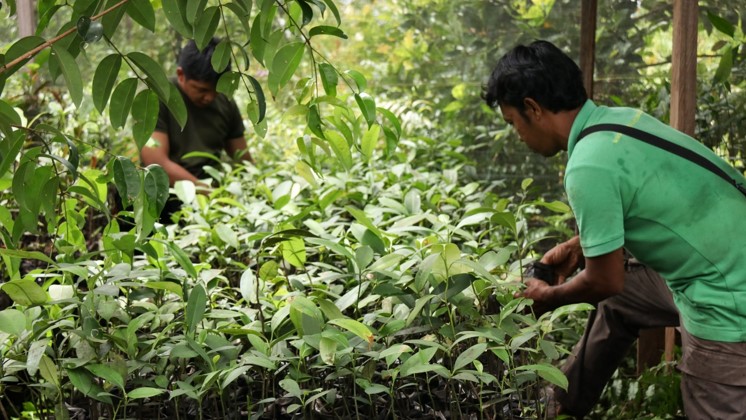
Reforestation is the process of bringing back a forest. Through human interference many forests have disappeared over the last centuries. Foundation reforestation aims to restore pieces of land to their former glory by planting trees and allowing them to develop into a forest. It’s about restoring biodiversity, regulating climate, capturing carbon and enhancing life quality for all. Forests are complex ecosystems dominated by trees and their relationships. The three main types of forest existing on our beautiful planet can be classified by their latitude, which is their distance to the equator. Tropical forests grow around the equator, receive a lot of rain and benefit from a constant temperature. Tropical forests have the largest species diversity in the world! Boreal forests are located near the arctic and have very long, dry and cold winters. They’re also called Taiga. Finally, Temperate forests are all the forests in between the equator and the arctic zones. As with the other types of forests, a lot of variation exists among the temperate forests. These forests can be further categorized in evergreen, seasonal, dry, montane, tropical, coniferous and subtropical.
Different layers of forest
A forest is made up of different vegetation layers that are each occupied by different plants and animals. At the forest floor decomposition is taking place in the root layer, covered by the moss layer and a herb layer. In the understory grows the shrub layer, bushes and young trees waiting for a chance to reach the canopy, which is the highest layer. The canopy consists of the crowns of adult trees. The tree species dominating the canopy often lends its name to describe the entire forest, like oak forest or beech forest.
Managing secondary forests
Forests can also be looked at in terms of how much they’ve been disturbed and interfered with. Primary forests are forests that have developed under natural processes and have never been logged. There are very few of these forests left. The Amazonian rain forest is probably the best known primary forest in the world. It is disappearing at a devastating speed. These important primary forests can’t be replaced. What we can do to help is create secondary forests. A secondary forest is a forest that has been logged and has recovered naturally or artificially. Foundation reforestation is creating these secondary forests that will grow into resilient and self-sustaining ecosystems. The more time soil is exposed, the more erosion can take place. That’s why it’s so important to plant trees as soon as possible.












